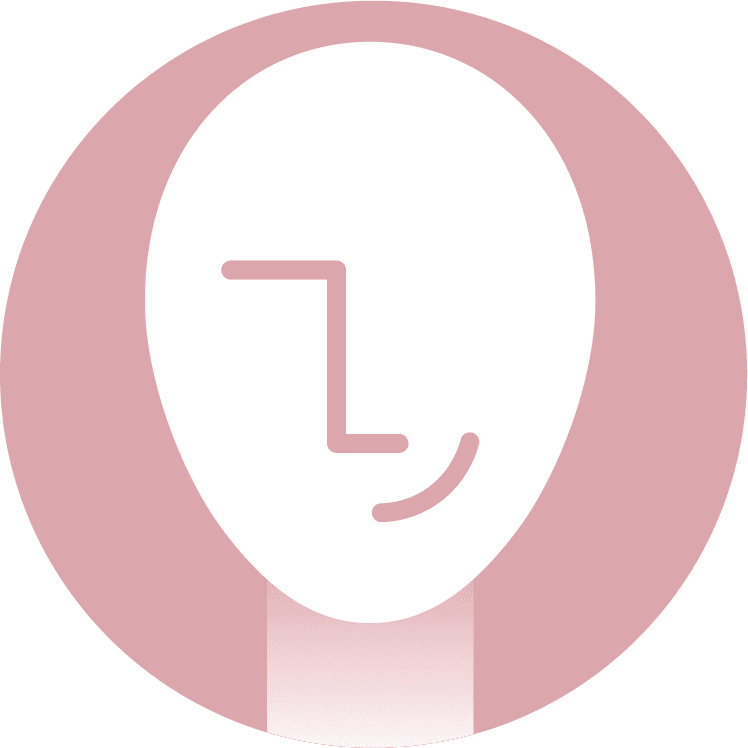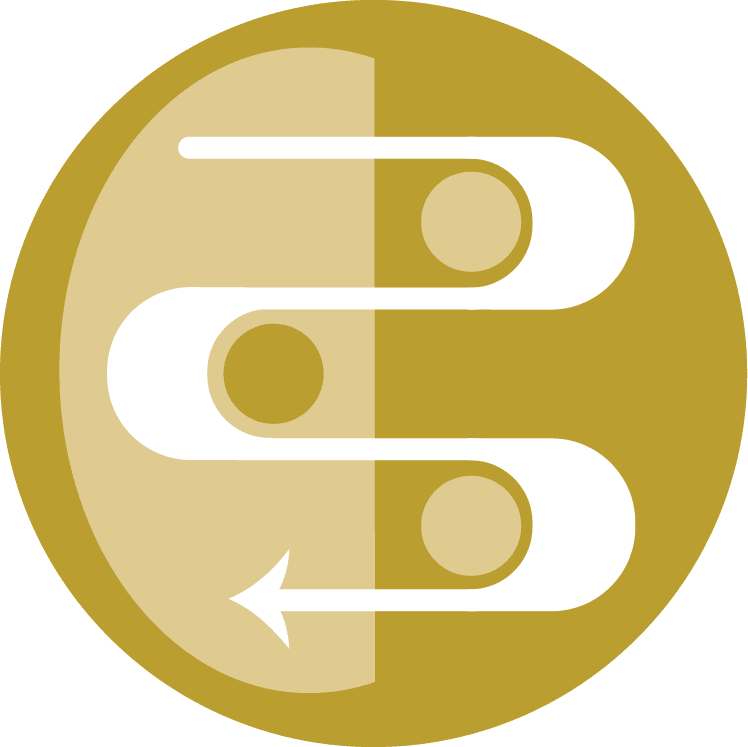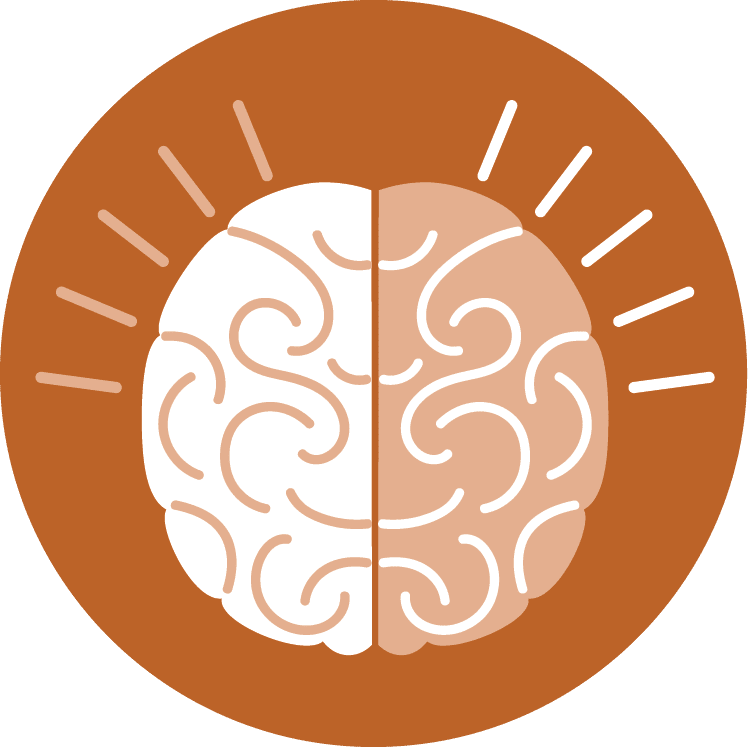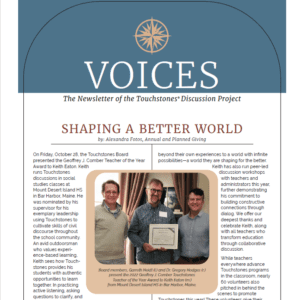What is a Touchstones discussion?
A Touchstones discussion is a weekly, open-ended exploration of ideas designed to foster active, authentic learning. Over time, our structured, standards-aligned program supports students of all ages and backgrounds to build essential discussion skills, including active listening, intentional speaking, analytical reasoning, collaboration, and shared leadership.
Touchstones discussions require no outside preparation for students and feature short, interdisciplinary primary source texts edited for grade-level accessibility.
What happens in a Touchstones discussion?

1 Ground Rules
Five ground rules anchor your students in respectful discussion, and are referred back to throughout the discussion.

2 Text for Discussion
Texts serve as tools to support inclusive group dynamics and raise ideas that all your students can explore.

3 Individual Work
Individual activities provide space for your students to connect their own experiences and opinions to the ideas in the text.

4 Small Group Work
Small groups provide a safer space for sharing ideas, and help your students practice collaborative learning.

5 Whole Group Discussion
Your students share and explore ideas together while learning to recognize their own strengths and make space for others.

6 Discussion Evaluation
Our evaluation tools help all your students reflect, recognize and take responsibility for group dynamics, and set goals for the next discussion.
How are texts in Touchstones different?
At Touchstones, we view texts not as ends in themselves, but as tools for navigating the processes that move a class toward inclusive dialog. The texts in each Touchstones curriculum volume have been chosen and ordered in an intentional sequence with the goal of supporting inclusivity as classes build Essential Skills and move through The Four Stages.
WHAT DO WE MEAN BY INCLUSIVE DISCUSSION?
An inclusive discussion is a collaborative exploration of ideas with no set agenda where every participant, including the discussion leader, recognizes an equal right to speak and learn and an equal responsibility to listen and make room for others.
WHAT DOES INCLUSIVE DISCUSSION LOOK LIKE IN TOUCHSTONES?
WHAT DO WE MEAN BY DIVERSE TEXTS?
The texts included in Touchstones’ volumes have been deliberately selected to highlight diversity across several dimensions. This breadth of perspectives is essential for building reflective and inclusive classrooms and communities.
HOW ARE TOUCHSTONES TEXTS DIVERSE?
What skills are built through Touchstones?
Our Essential Skills support social-emotional learning goals and help all learners develop the competencies they need to navigate our changing world. Touchstones strengthens the work you’re already doing to build your students’ civil discourse skills, enhancing the outcomes of programs and strategies like Socratic seminar and restorative practices.
Touchstones Essential Skills

Confidence

Speaking

Active Listening

Leadership

Reflective Thinking

Analytical Reasoning

Cooperative Learning
Collaboration
The Four Stages of Group Development in Touchstones
To build a truly effective, inclusive, and collaborative discussion group, all Touchstones classes progress through four stages of development. The skills learned and practiced at each stage build upon and work together with those learned in other stages.
1. Participation
Goal: Students begin speaking to one another and not only to or through the teacher.
In this stage, the teacher focuses on establishing an environment where every student feels able to speak to and learn from peers.
2. Cooperation
Goal: Each student has a voice and opinions that have a place in the discussion class, regardless of that student’s academic performance or background.
In Stage 2, every student must feel comfortable as a speaker whose perspective is valued by the group. Students in the first two stages need to put as much effort into understanding the process of group dynamics in discussion as they put into understanding the text.
3.
Active Listening
Goal: Students examine their own assumptions to more accurately understand other points of view—both those of the author and of their peers.
Listening is a complex activity requiring much more than our sense of hearing. Active listening occurs when a person strives to understand another speaker’s or author’s intended meaning. In this stage, students begin to recognize diverse viewpoints as distinct from their own and worthy of examination.
4. Collaborative Leadership
Goal: All students act as both participants and leaders.
Collaborative leadership is achieved when each member of the group acts with a shared sense of responsibility for the success of the discussion. When a group achieves shared leadership, it is often difficult to distinguish the leader from the participants.



 Join the
Join the